A deep insight into the sialotranscriptome of the gulf coast tick, Amblyomma maculatum
- PMID: 22216098
- PMCID: PMC3244413
- DOI: 10.1371/journal.pone.0028525
A deep insight into the sialotranscriptome of the gulf coast tick, Amblyomma maculatum
Abstract
Background: Saliva of blood sucking arthropods contains compounds that antagonize their hosts' hemostasis, which include platelet aggregation, vasoconstriction and blood clotting; saliva of these organisms also has anti-inflammatory and immunomodullatory properties. Perhaps because hosts mount an active immune response against these compounds, the diversity of these compounds is large even among related blood sucking species. Because of these properties, saliva helps blood feeding as well as help the establishment of pathogens that can be transmitted during blood feeding.
Methodology/principal findings: We have obtained 1,626,969 reads by pyrosequencing a salivary gland cDNA library from adult females Amblyomma maculatum ticks at different times of feeding. Assembly of this data produced 72,441 sequences larger than 149 nucleotides from which 15,914 coding sequences were extracted. Of these, 5,353 had >75% coverage to their best match in the non-redundant database from the National Center for Biotechnology information, allowing for the deposition of 4,850 sequences to GenBank. The annotated data sets are available as hyperlinked spreadsheets. Putative secreted proteins were classified in 133 families, most of which have no known function.
Conclusions/significance: This data set of proteins constitutes a mining platform for novel pharmacologically active proteins and for uncovering vaccine targets against A. maculatum and the diseases they carry.
Conflict of interest statement
Figures



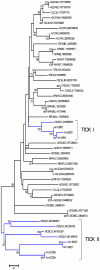



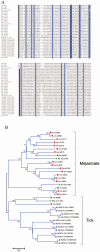
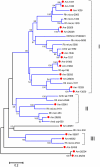
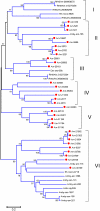
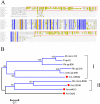
Similar articles
-
The sialotranscriptome of Amblyomma triste, Amblyomma parvum and Amblyomma cajennense ticks, uncovered by 454-based RNA-seq.Parasit Vectors. 2014 Sep 8;7:430. doi: 10.1186/1756-3305-7-430. Parasit Vectors. 2014. PMID: 25201527 Free PMC article.
-
Analysis of the Salivary Gland Transcriptome of Unfed and Partially Fed Amblyomma sculptum Ticks and Descriptive Proteome of the Saliva.Front Cell Infect Microbiol. 2017 Nov 21;7:476. doi: 10.3389/fcimb.2017.00476. eCollection 2017. Front Cell Infect Microbiol. 2017. PMID: 29209593 Free PMC article.
-
An Insight into the Sialome of the Lone Star Tick, Amblyomma americanum, with a Glimpse on Its Time Dependent Gene Expression.PLoS One. 2015 Jul 1;10(7):e0131292. doi: 10.1371/journal.pone.0131292. eCollection 2015. PLoS One. 2015. PMID: 26131772 Free PMC article.
-
TickSialoFam (TSFam): A Database That Helps to Classify Tick Salivary Proteins, a Review on Tick Salivary Protein Function and Evolution, With Considerations on the Tick Sialome Switching Phenomenon.Front Cell Infect Microbiol. 2020 Jul 24;10:374. doi: 10.3389/fcimb.2020.00374. eCollection 2020. Front Cell Infect Microbiol. 2020. PMID: 32850476 Free PMC article. Review.
-
Exploring tick saliva: from biochemistry to 'sialomes' and functional genomics.Parasitology. 2004;129 Suppl:S83-94. doi: 10.1017/s0031182004005189. Parasitology. 2004. PMID: 15938506 Review.
Cited by
-
Identification of 24h Ixodes scapularis immunogenic tick saliva proteins.Ticks Tick Borne Dis. 2015 Apr;6(3):424-34. doi: 10.1016/j.ttbdis.2015.03.012. Epub 2015 Mar 29. Ticks Tick Borne Dis. 2015. PMID: 25825233 Free PMC article.
-
Tick bite-induced alpha-gal syndrome and immunologic responses in an alpha-gal deficient murine model.Front Immunol. 2024 Feb 8;14:1336883. doi: 10.3389/fimmu.2023.1336883. eCollection 2023. Front Immunol. 2024. PMID: 38390396 Free PMC article.
-
A physiologic overview of the organ-specific transcriptome of the cattle tick Rhipicephalus microplus.Sci Rep. 2020 Oct 26;10(1):18296. doi: 10.1038/s41598-020-75341-w. Sci Rep. 2020. PMID: 33106528 Free PMC article.
-
An Exploratory Study on the Microbiome of Northern and Southern Populations of Ixodes scapularis Ticks Predicts Changes and Unique Bacterial Interactions.Pathogens. 2022 Jan 21;11(2):130. doi: 10.3390/pathogens11020130. Pathogens. 2022. PMID: 35215074 Free PMC article.
-
Early Transcriptional Changes in the Midgut of Ornithodoros moubata after Feeding and Infection with Borrelia duttonii.Microorganisms. 2022 Feb 28;10(3):525. doi: 10.3390/microorganisms10030525. Microorganisms. 2022. PMID: 35336101 Free PMC article.
References
-
- Jones LD, Matthewson M, Nuttall PA. Saliva-activated transmission (SAT) of Thogoto virus: dynamics of SAT factor activity in the salivary glands of Rhipicephalus appendiculatus, Amblyomma variegatum, and Boophilus microplus ticks. Exp Appl Acarol. 1992;13:241–248. - PubMed
Publication types
MeSH terms
Substances
Grants and funding
LinkOut - more resources
Full Text Sources

